
CAI, YAN-YU
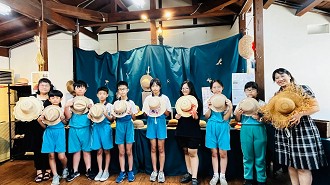
|
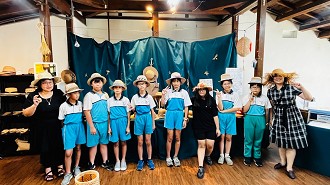
|
 |
Maybe they don't have a resounding reputation, but the halo hidden behind their hard work is so dazzling that it is hard to ignore. The inheritance protects the traditional skills passed down from generation to generation. They create beautiful things with their own hands, and their craftsman attitude formed through the tempering of time is worthy of respect and learning.
|
 |
However, with the advancement of technology, cold machines have gradually replaced the warm touch, and skills have disappeared over time. However, there is a group of people who have always quietly persisted in preserving this culture that accumulates Taiwan's beautiful creativity.
|
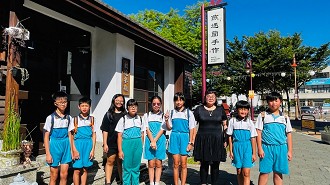
|
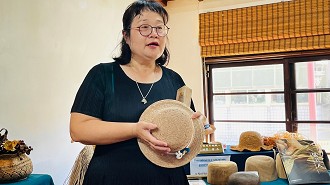
|
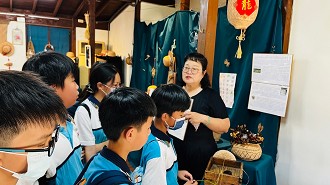
|
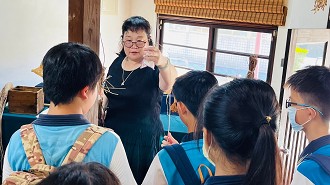
|
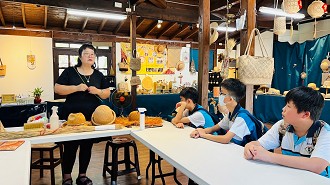
|
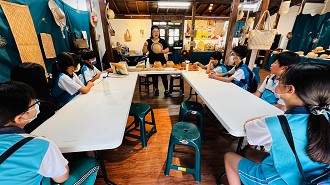
|
CAI, YAN-YU teacher
Osmanthus Alley Artist Village- CAI, YAN-YU Handmade 6 years
Q1:Teacher, you mentioned in the "Lukang People" newspaper that Lukang has the Cypress Straw Hat craft that is unique in Taiwan. Are there any similarities between rush straw hat and Cypress Straw Hat?
A:The weaving method is the same, just the materials are different.
The origin of the rush straw hat is in Miaoli County, and its development place is in Dajia Dist, Taichung City; the origin and development place of the cypress straw hat are both in Lukang. A hat woven with rush is called a rush straw hat, and a hat woven with cypress straw is called a cypress straw hat.
Q2:Why did you want to place twister wire machines and Cypress Straw Hat related items in the studio to promote the Cypress Straw Hat?
A:Mr. Huang, who introduced me to the Osmanthus Alley Artist Village, saw me weaving rush and gave me a book about the legend of the Lukang Cypress Straw Hat. It turned out that it is what the people of Lukang call "le a cao". I think that since the Cypress Straw Hat craft is a traditional craft of Lukang, it is really worth promoting.
Q3:What interesting things happened when the teacher was instructing us on knitting?
A:The characteristic of rush weaving is that rush is a natural plant and has moisture itself, so some processes are required before production. First, the rush must be dried, and then remember to spray some water when weaving to prevent it from breaking.
Because rush is fibrous, spraying water will soften the fiber, making the softened rush easier to weave. The most difficult part in the weaving process is that the grass is soft and will become tangled and run away during weaving, which usually makes beginners find it difficult. In fact, as long as you understand the method and work patiently, your work will definitely be unique.
Q4:Will anyone buy the Cypress Straw Hat now?
A:There are still people who want to buy Cypress Straw Hat, but we don’t have Cypress Straw Hat to sell. If I still have cypress straw, I can also knit a Cypress Straw Hat. But now even the rush hats that we hand-weave with rush are considered too expensive by some people.
Nowadays, cypress wood is precious and is not specially planed into silk for making hats. In the past, because Lukang wood carving craftsmanship was flourishing, people cherished the materials and plane the remaining cypress materials into silk for utilization. Now the Cypress Straw Hat can only become a legend.
Q5:Have you ever participated in the heyday of Cypress Straw Hat in Lukang?
A: I was not involved in the heyday of Cypress Straw Hat in Lukang. That should have been during the late Japanese colonial era, when my great-grandmother might have had the opportunity to participate in the heyday of Cypress Straw Hat in Lukang. In the early days, women could support their families by weaving hats, so when I was a child, I saw my mother weaving rush hats. The Lukang Cypress Straw Hat was popular during the Japanese colonial era because the cypress wood is fragrant and the straw hat is breathable and cool. For the Japanese who are used to living in Northeast Asia, the Cypress Straw Hat is ventilated and cool, and can relieve summer heat, so most of the Cypress Straw Hats were exported overseas at that time.
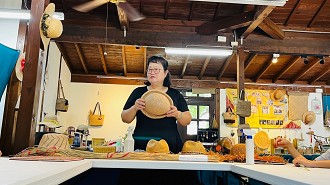
|
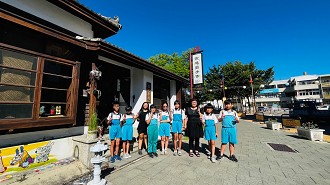
|
 |
Teacher CAI, YAN-YU accepted our interview in July, and when she learned that we had found that the Qiaotou Community in Fuxing Township had preserved Cypress Straw Hat-related equipment, tools and materials, she was happy to accompany us to visit. The teacher said that if she could find a source of cypress straw, she could also work with community partners to weave Cypress Straw Hats and pass on the cypress straw craft.
|
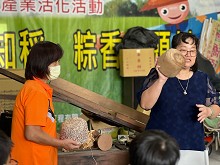
|
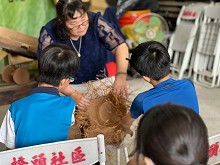
|

|

